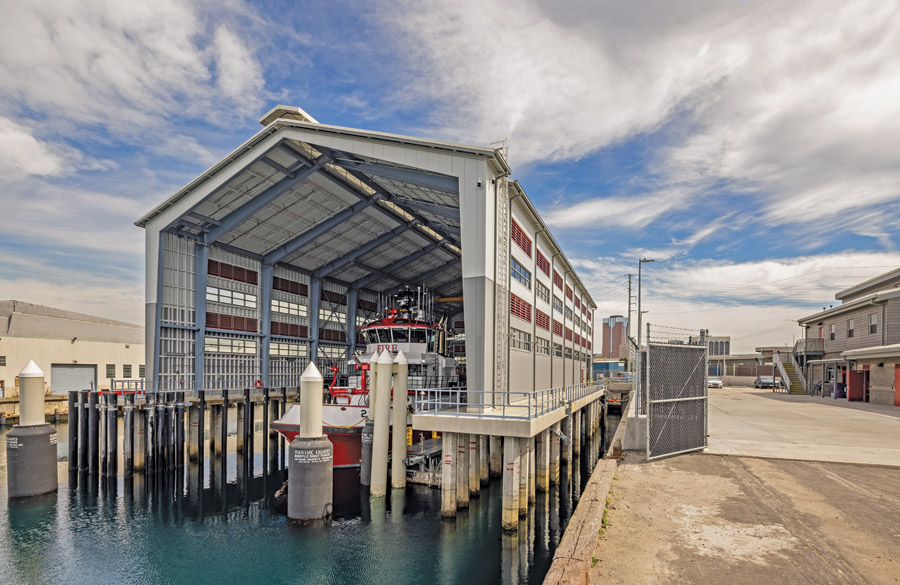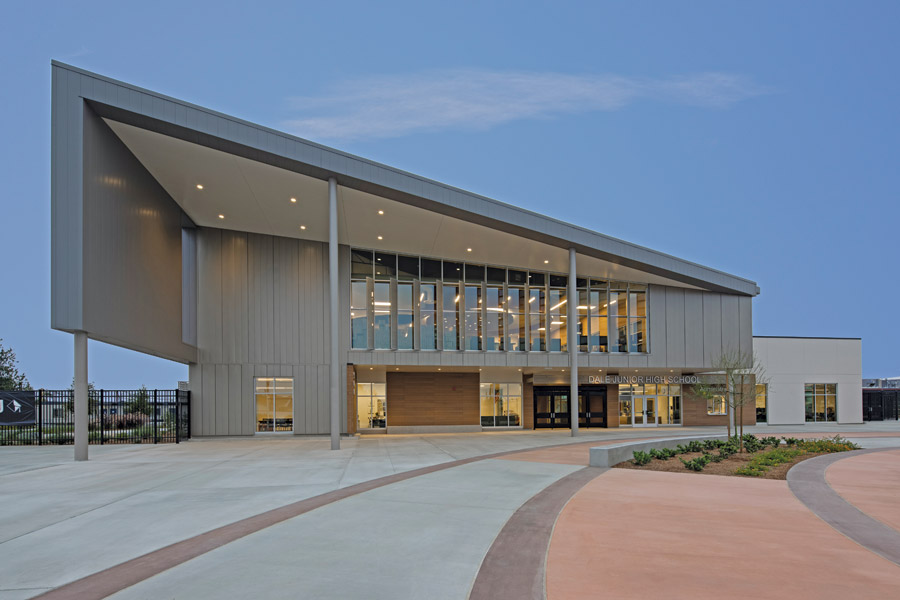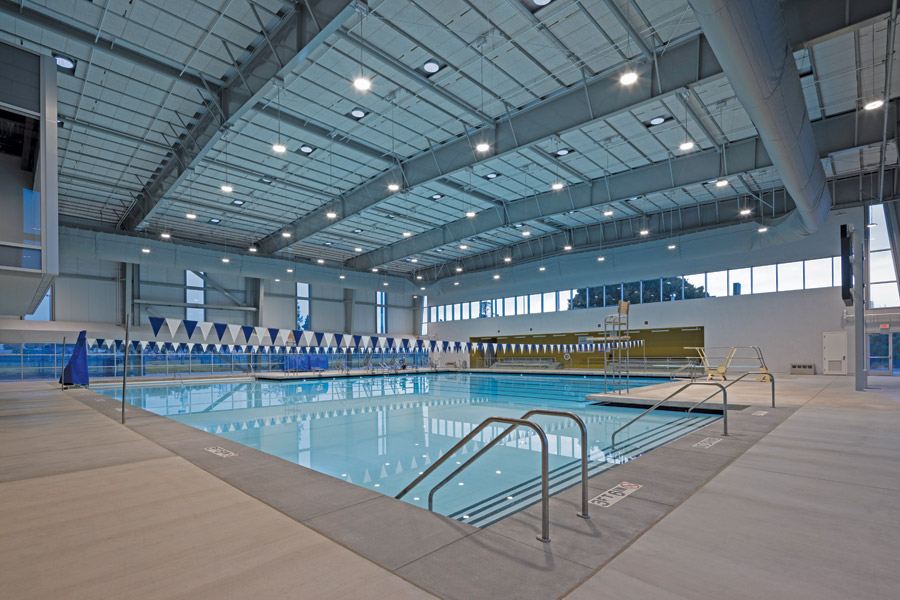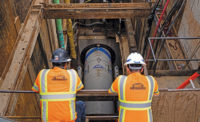Over the past century, Pinner Construction has overcome a host of challenges including recessions, leadership changes and a worldwide pandemic. But since its founding in 1919, the Anaheim, Calif.-based company has stayed true to its core values of quality customer service and workmanship as it continued down a path to becoming one of the most respected general contractors in the state.
“The secret sauce in Pinner’s success is our employees, and having competent people that care is our No. 1 asset,” says CEO Dirk Griffin. “We are doing $100 million to $200 million builds on average, and it’s all about the people. Every single one of our employees is an ambassador for the company, so we train them properly and take care of them.”
Griffin, who purchased the company in 2016, says customer service is another key. “I am very active, and I am out with the owners all the time in the field, and most CEOs don’t do that,” he says. “We are also extremely transparent and loyal with our clients, and we even share the books with them on jobs.”
Those relationships are enhanced by the company’s focus on specific sectors and taking time to build a strong reputation for excellence. Projects for public entities are a good example, and school projects make up between 65% and 70% of Pinner’s work.
The company is currently involved in six projects for Los Angeles Unified School District (LAUSD) with a combined contract value of more than $700 million.
The firm experienced a downturn with the COVID pandemic, and its revenue fell from $177 million in 2020 to $133.6 million in 2021. But the firm stayed nimble by utilizing alternative delivery methods and developing a strong team of contractors, and Pinner rebounded with revenue of nearly $170 million in 2022, followed by $184.04 million in 2023.
The firm is now projecting revenue of about $250 million to $300 million in 2024, thanks in part to a couple of California Highway Patrol Stations projects in Southern California that will total more than $125 million.
As a result of their recent strong performance, Pinner Construction has been selected as ENR California’s 2024 Contractor of the Year.

Pinner’s work on the Port of Long Beach fire stations exceeded the port’s sustainability goals by achieving LEED Gold certification.
Photo courtesy Pinner Construction
Head of the Class
Pinner is currently working on completing 11 active projects in Southern California and has several others in the contract award phase, says Justin Davis, president of business development.
The contractor is continuing to target vertical public works construction opportunities in Southern California. One of Pinner’s biggest current clients is LAUSD, which the company has worked with on a half dozen major projects since 2014, including new construction, seismic retrofits and remodels.
“Pinner Construction has a very well developed understanding of Los Angeles Unified School District,” says Alix Walsh O’Brien, deputy chief facilities executive at LAUSD. “They understand our objectives and our business practices. They communicate with us on every project with both executives and project management and field level staff. And executive level engagement and attention to project challenges is consistently available on every project.”
“They understand our objectives and our business practices. They communicate with us on every project with both executives and project management and field level staff.”
—Alix Walsh O'Brien, Deputy Chief Facilities Executive, LAUSD
Walsh O’Brien says Pinner works particularly well with the school district during the design phase of its large design-build comprehensive modernization projects. “The number of meetings and the various stakeholders who represent Los Angeles Unified School District during the design process is demanding on many of our general contractors, but Pinner recognizes the complexity of planning and design decisions, including working through mock-ups collaboratively and the fine points of material and color selection,” she says. “The district continues to work to be decisive and time sensitive with our business partners, and Pinner makes it look easy.”
Hazim J. Rabadi, principal and office practice leader with CannonDesign, says he enjoys working with Pinner because of their collaborative approach and the involvement of the contractor’s senior team members. “Working with Pinner means that they truly include us as part of their team. And in working with the senior people, we are able to come to decisions quickly,” he says.
CannonDesign has worked with Pinner on numerous projects over the years, including three current LAUSD projects: Shenandoah Elementary School, Grant High School and Lincoln High School. These are all multiyear projects that will complete in 2025, 2026 and 2028, respectively.
Rabadi says when working on the pricing for the Shenandoah project, there were a lot of back and forth meetings and discussions to ensure the project team was going to be able to meet the client’s budget.
“Every single one of our employees is an ambassador for the company, so we train them properly and take care of them.”
—Dirk Griffin, CEO, Pinner Construction
“We worked hard at identifying areas for savings that did not affect the quality of the project,” he says. “Pinner brought solutions to the table and listened to the design and quality needs of the project to make sure that the client would be happy and the project would be successful. They worked collaboratively with us to come up with those solutions. They were a true partner.”
One of the largest school projects currently underway for Pinner is the more than $220-million comprehensive modernization project at Lincoln High School for LAUSD that includes new buildings, a seismic retrofit and modernization of existing historic buildings, along with outdoor plazas and sports facilities.
Dan Domenici, division manager with Rosendin, who is working with Pinner on the Lincoln High School project, says Pinner does a great job at communicating throughout the construction process.
“They share timely information to the entire team and are proactive up front,” says Domenici, who is also working with Pinner on the two CHP stations. “They excel at the planning and preconstruction phases of the project to ensure team buy-in and gain a clear understanding of the end goal—delivering the best product the industry can provide while maintaining budget.”
Domenici adds that Pinner’s approach to planning and up-front preconstruction coordination is top notch. “They use a third party consultant, SWAP Integration, that helps direct workflow through the design process, clearly defining responsibility and expectations.”

The campus revitalization of AHSD’s Dale Junior High School included an administration building, a band building and the modernization of five existing classroom buildings.
Photo courtesy Pinner Construction
Running a Tight Ship
Moving from land to sea, Pinner also recently completed two LEED Gold fireboat stations for the Port of Long Beach. These stations are part of a $109-million port program to preserve business continuity, security and economic interests. They greatly enhance the Long Beach Fire Department’s waterside and landside emergency response capabilities, better safeguarding visiting ships, cargo and waterfront workers.
Fireboat Station 15 is a single-level, 7,750-sq-ft building in the port’s outer harbor with living quarters, a garage for two firefighting apparatus trucks and a full wharf with a 16,311-sq-ft boat bay enclosure. The project exceeded the port’s sustainability goals by achieving USGBC LEED Gold Certification when Silver Certification was the contractual requirement.
Fireboat Station 20, also LEED Gold, is a two-level, 9,783-sq-ft structure with living quarters, a garage for two firefighting trucks and a 16,280-sq-ft boat bay enclosure.

The Michelle and Barack Obama Sports Complex in Rancho Cinega, Calif., is a 49,000-sq-ft sports facility that includes an indoor pool and a two-story gymnasium.
Photo courtesy Pinner Construction
Darrin Lambrigger, director of construction management with Port of Long Beach, says the Pinner team made excellent partners and were problem solvers on the fireboat station projects. He says when supply chain issues arose during the pandemic and materials such as HVAC and elevator equipment were delayed, Pinner worked closely with the port to find a way to get everything installed as quickly as possible.
“Pinner worked with the suppliers and electrical gear, and wherever possible they tried to move up the delivery dates. They were very transparent with our teams, saying ‘here are the impacts, here is what we have done along the way,’ and it helped us communicate with the rest of the team,” says Lambrigger.
Like the fireboat stations, all of Pinner’s other current projects are LEED or CHPS certified.
“The construction culture has shifted significantly over the years in response to the absolute need for responsible and sustainable construction,” says Min Zavarella, Pinner’s president of operations. “California has been on the leading edge of the sustainability movement from the onset, and our building codes reflect this. As a builder in California, we are involved both by need and by law. For Pinner, the fact that our projects are LEED or CHPS certified validate our own commitment to the future of construction.”





